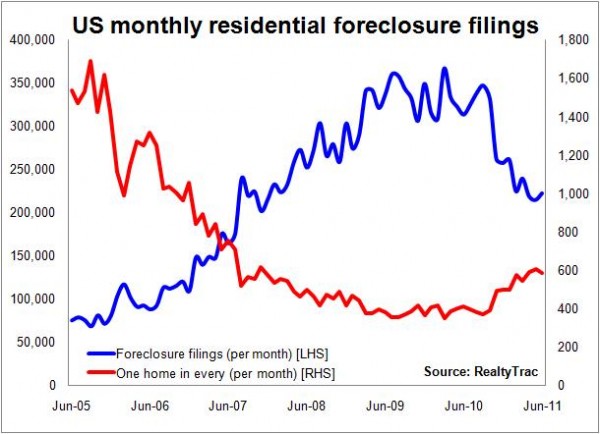US foreclosure filings decline in first half of 2011, but the numbers are still scary
Here are some stats that put the UK housing market plight into perspective.
RealtyTrac, an online marketplace for foreclosed properties in the US, yesterday released its mid-year market report.
It’s good news of sorts. It shows a 25% drop in foreclosure filing in the first half of 2011 compared with the final half of 2010 and a 29% drop on the first half of 2010. And the graph shows the trend has been down over the past 12 months or so.

But here’s a figure to conjure with. In the first six months of this year there were 1,170,402 US properties that received foreclosure filings, which comprise default notices, auction sale notices and bank repossessions. That is one in every 111 homes.
Then if we focus in on Nevada. Here one in 21 homes received at least one foreclosure filing over the first half of this year. And things are actually getting better. In Arizona the equivalent rate of foreclosure filings was one home in 36. And in the mighty state of California the figures was one in 51 homes.
Direct comparisons with any UK figures are not easy, as the legal processes and approaches to foreclosures in the US and repossessions in the UK differ.
The Ministry of Justice figures for mortgage possession actions in the county courts of England and Wales represent a fairly wide measure, currently there are about half as many homes taken into possession as there are claims issued. But they’ll do for crude comparisons.
The figures show claims issued came to 19,608 in the first quarter of this year. That represented one household in about every 1,200. And over the 12 months to March this year there were 76,234, which represents one in every 300 households.
So we are looking at about one in 600 households nationally facing claims in a six month period at current rates.
Even in Corby, which topped the claims rate table, we get a figure of below one in 200 for a six month period.
The question is whether we should be in some way comforted by our figures or more fearful because, when we look across the Atlantic, we see what is possible in a housing market .